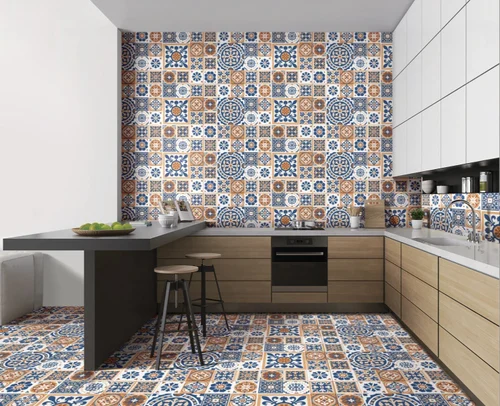Subway tiles have been a popular choice in interior design for decades, known for their versatility, durability, and timeless appeal. Originally used in the New York City subway system in the early 1900s, these tiles have now become a staple in homes, offices, and commercial spaces worldwide. Their classic rectangular shape and sleek finish make them an ideal choice for a variety of settings, from kitchens and bathrooms to feature walls and backsplashes.
History and Evolution
Subway tiles were first introduced in 1904 as part of the design for New York City’s subway stations. The goal was to create a surface that was not only easy to clean but also bright and reflective to enhance underground lighting. Over the years, subway tiles have evolved from their classic white, glossy ceramic form to include a wide array of colors, textures, sizes, and materials.
Types of Subway Tiles
- Ceramic Subway Tiles – The most traditional option, ceramic subway tiles are affordable, easy to maintain, and available in a variety of colors and finishes.
- Glass Subway Tiles – These tiles offer a sleek, modern look with a glossy, translucent finish that reflects light beautifully.
- Marble Subway Tiles – For a luxurious touch, marble subway tiles add natural elegance and sophistication to any space.
- Porcelain Subway Tiles – More durable than ceramic, porcelain subway tiles are water-resistant and ideal for high-traffic areas.
- Metal Subway Tiles – A contemporary choice, metal subway tiles bring an industrial and edgy feel to interiors.
Applications of Subway Tiles
- Kitchens: Used as backsplashes, subway tiles protect walls from spills and stains while adding style.
- Bathrooms: Subway tiles are a popular choice for shower walls, floors, and vanity backsplashes due to their water-resistant properties.
- Living Areas: Subway tiles can be used to create stunning feature walls, fireplace surrounds, and accent areas.
- Commercial Spaces: Many restaurants, cafes, and boutiques use subway tiles to achieve a chic and professional ambiance.
Popular Patterns and Layouts
- Classic Brick Pattern: The most common layout where tiles are offset to create a staggered brick-like effect.
- Herringbone Pattern: Tiles are arranged in a V-shape to add a sense of movement and visual interest.
- Vertical Stacking: A modern approach where tiles are stacked in vertical columns for a sleek and contemporary look.
- Chevron Pattern: Similar to herringbone but with a more symmetrical, zigzag design.
- Basketweave Pattern: An intricate design that adds a dynamic and decorative touch to spaces.
Benefits of Subway Tiles
- Timeless Appeal: Subway tiles never go out of style and blend seamlessly with both traditional and modern interiors.
- Easy Maintenance: Their smooth surface makes cleaning a breeze, requiring just a wipe with a damp cloth.
- Versatile Design: Available in numerous colors, finishes, and materials, subway tiles can be customized to suit any decor.
- Affordable: Compared to other tiling options, subway tiles are budget-friendly while offering high aesthetic value.
- Durability: Resistant to stains, moisture, and heat, subway tiles are an excellent long-term investment.
Conclusion
Whether you prefer the classic white subway tile or a bold, colored variation, subway tiles offer endless possibilities for transforming any space. Their simple yet sophisticated charm makes them a go-to option for designers and homeowners alike. If you’re looking for a tile solution that is stylish, functional, and enduring, subway tiles are an excellent choice for your next renovation project.









